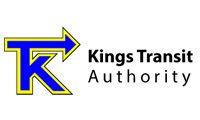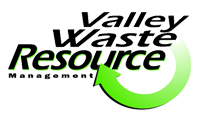Let's shed some light on your search



Route 6 – Kejimkujik National Park and National Historic Site of Canada
Route 6 is also catalogued in this guide as an overnight route, but offers several day trip
opportunities as well.
Kejimkujik (pronounced kej-im-koo-jik) National Park encompasses 381 square kilometres of forests
and interconnecting lakes, offering the visitor a variety of paddling experiences in natural, undeveloped
surroundings. Many of the canoe routes follow those of the original Mi'kmaq, whose historical influence in this
area extends back over 5000 years. A paddling or hiking trip into Kejimkujik's backcountry is a chance to
experience the tranquil, wild landscape that makes this national park so special.
The park offers day trip opportunities and longer routes that will take you well into the backcountry.
Routes are serviced with well-maintained portages and "primitive" camping sites. Campgrounds, group
campgrounds and canoe rentals are also available. Other activities in the park include hiking, supervised
swimming, picnicking, guided interpretive programs and self-guided trails. Kejimkujik is home to a wide
variety of wildlife such as white-tailed deer, porcupine, beaver and the endangered Blanding's turtle.
Visitor Centre: (1)
Jake's Landing: (2)
Boat launch
Canoe/kayak rentals
Rentals include paddles, PFDs, bailer and whistle
Phone: 902 682-2282, Email: info@whynotadventure.ca
Eel Weir: (3)
You may purchase detailed maps of all navigable waterways and campsites from the park. The map
accompanying this guide is therefore general in nature. Inquiries regarding specific information on
Kejimkujik's canoe routes, campsite reservations (online www.reservation.parkscanada.gc.ca) and general
park regulations can be obtained at the Visitor Centre (2) at the park or by contacting:
Kejimkujik National Park, Box 36A, Maitland Bridge, NS, B0T 1N0
Phone: 1 902 682-2772, Email: Kejimkujik_Info@pc.gc.ca
Website: www.parkscanada.gc.ca or www.friendsofkeji.ns.ca
Wilderness Canoeing:
Canoeing is the best possible way to experience Kejimkujik National Park. By using the craft of the
early Mi'kmaq, you can enjoy the unfolding landscape as you travel from stillwaters to small lakes and, finally,
across the island studded expanse of Kejimkujik Lake. The routes described below are classified Level 1
(very easy), by Canoe Kayak Nova Scotia. All canoeing is in flat water and portages are good. Normally, no
white water canoeing is available in the park except on some stretches of river in the spring, or during flood
periods.
Be Prepared:
a) Paddlers may encounter high winds and waves, and should have navigational and canoe camping skills.
b) Foul weather may force you to stay put until conditions permit safe travel. Ensure your trip plan allows for
extra time and provisions in case this happens to you.
c) Portages, marked with yellow and brown signs, are provided around all areas, which are hazardous
during high water periods, or impassable when water levels are low. You will have to carry your canoe at
all portages.
d) Regulations require that you have a personal floatation device (PFD) for each person. These should be
worn at all times.
e) You must have a bailer, throw rope and a noise-making device for attracting attention if you require help.
A whistle attached to your PFD is recommended. Each canoe must have two paddles. One extra paddle
and a light are recommended.
Backcountry Camping:
You must register at the Visitor Centre before beginning an overnight trip.
We recommend advanced reservations (www.reservation.parkscanada.gc.ca or 1-877-737-3783.
Reservations start on the first Monday of May at 8 am, and can then be made for any time during the
operations season. A reservation fee and nightly camping fees are charged. These can be paid by credit
card. Sites can also be rented at the Kejimkujik VRC for same day departures.
You must camp at the established sites, which have been designed to provide good facilities and
concentrate use at selected locations so that most of the backcountry will remain undisturbed. Each site
has a gravel tent pad, an outhouse toilet, fireplace and a picnic table. Cut firewood is provided at all
campsites.
Group Size:
The number of people that may stay at a single backcountry campsite is limited, and most
accommodate a maximum of six people. This keeps impact and erosion within acceptable limits, and
controls the number of people in the backcountry so that everyone can experience the tranquility and
solitude they seek.
Big Dam/Frozen Ocean (26km): Starting Point: Take Portage 'Q' (0.4km) from the Big Dam Lake parking lot.
This is the best route for the inexperienced canoeists, or the first time visitor who wants a two or three
day outing. After years of experience, it may well remain your favourite. Each lake is unique, but Big Dam Lake
is the most striking. Joined in the middle by a narrow passage, it is really two water bodies in one. The
southeast portion has clear water fed by springs and runoff, while the northwest portion is filled with the dark
red-brown water borne by a large brook, which flows through a bog.
All along the route you'll notice the tips of old logs floating just above the surface. Sphagnum moss,
sundew and cranberries now grow on logs, which were lost while being driven downstream many years ago.
The last logging drive was in the mid 1950's; the first was about a century ago. While this trip can be done in
two days, plan on taking three to enjoy it best. Spend a night on Frozen Ocean Lake and then one on
Kejimkujik Lake. If you start late, stay at Big Dam Lake the first night and at Frozen Ocean the next.
Except for Kejimkujik Lake, the lakes are generally small and are usually not too windy during the day.
The stillwaters and the flowing part of the river are easy canoeing. Portages are of short to moderate length
and, on a multi-day trip, the going is easy.
Kejimkujik Lake (8km x 5km): Starting Point: Begin and end at Jakes Landing, or at the Mersey River Bridge (Eel Weir) below George Lake.
The shoreline and islands of Kejimkujik Lake, and the rivers leading into it, can be explored without
portaging. The mood of the big lake changes constantly from misty mornings through bright, windy
afternoons, to peaceful sunsets. The islands vary from tiny sandspits to large forested islands, each with its
own personality.
Some have small hidden beaches; others may harbour a doe and her fawn. The rivers leading from
the lake are excellent for viewing beaver and deer; the open lake is good for spotting loons, gulls, tern and the
occasional osprey.
Peskowesk Lake System (48km): Starting Point: Cross Kejimkujik Lake from Jakes Landing, or start from the Mersey River (Eel Weir) below George Lake.
The Peskowesk Lake System is also the gateway to the Tobeatic Wilderness Area or the Shelburne
Heritage River System. Here you will experience wilderness canoeing at its best. Fewer people travel this
route because more portaging is necessary than in other areas. Many old-timers favour this part of the Park,
where the landscape of windswept stands of red and white pine is reminiscent of the Canadian Shield. This
system of a dozen lakes is connected by thirteen portages. Some of the lakes are spring fed and clear, others
are fed by dark brown streams flowing through bogs. As their name implies, the Silver Lakes are among the
clearest in the region. As you paddle, you can see the rocks and plants, metres below on the bottom.
You should be well prepared to portage, and anticipate stiff winds (prevailing westerly winds) on both
Peskowesk and Peskawa Lakes in mid-day. Ask a staff person when planning your trip. In the summertime
there are wilderness patrols on Peskowesk Lake. Refer to Kejimkujik's regulations on the website and note:
a) Pets can be a threat to wildlife and must be kept on a leash at all times. We recommend they not be taken
into the backcountry.
b) It is illegal to leave a fire unattended. Please make sure that the fire is out!
c) It is illegal to build a fire outside the designated area. Please use only those areas that are provided.
d) Pack in, pack out policy
across the island studded expanse of Kejimkujik Lake. The routes described below are classified Level 1
(very easy), by Canoe Kayak Nova Scotia. All canoeing is in flat water and portages are good. Normally, no
white water canoeing is available in the park except on some stretches of river in the spring, or during flood
periods.
Be Prepared:
a) Paddlers may encounter high winds and waves, and should have navigational and canoe camping skills.
b) Foul weather may force you to stay put until conditions permit safe travel. Ensure your trip plan allows for
extra time and provisions in case this happens to you.
c) Portages, marked with yellow and brown signs, are provided around all areas, which are hazardous
during high water periods, or impassable when water levels are low. You will have to carry your canoe at
all portages.
d) Regulations require that you have a personal floatation device (PFD) for each person. These should be
worn at all times.
e) You must have a bailer, throw rope and a noise-making device for attracting attention if you require help.
A whistle attached to your PFD is recommended. Each canoe must have two paddles. One extra paddle
and a light are recommended.
Backcountry Camping:
You must register at the Visitor Centre before beginning an overnight trip.
We recommend advanced reservations (www.reservation.parkscanada.gc.ca or 1-877-737-3783.
Reservations start on the first Monday of May at 8 am, and can then be made for any time during the
operations season. A reservation fee and nightly camping fees are charged. These can be paid by credit
card. Sites can also be rented at the Kejimkujik VRC for same day departures.
You must camp at the established sites, which have been designed to provide good facilities and
concentrate use at selected locations so that most of the backcountry will remain undisturbed. Each site
has a gravel tent pad, an outhouse toilet, fireplace and a picnic table. Cut firewood is provided at all
campsites.
Group Size:
The number of people that may stay at a single backcountry campsite is limited, and most
accommodate a maximum of six people. This keeps impact and erosion within acceptable limits, and
controls the number of people in the backcountry so that everyone can experience the tranquility and
solitude they seek.
Big Dam/Frozen Ocean (26km): Starting Point: Take Portage 'Q' (0.4km) from the Big Dam Lake parking lot.
This is the best route for the inexperienced canoeists, or the first time visitor who wants a two or three
day outing. After years of experience, it may well remain your favourite. Each lake is unique, but Big Dam Lake
is the most striking. Joined in the middle by a narrow passage, it is really two water bodies in one. The
southeast portion has clear water fed by springs and runoff, while the northwest portion is filled with the dark
red-brown water borne by a large brook, which flows through a bog.
All along the route you'll notice the tips of old logs floating just above the surface. Sphagnum moss,
sundew and cranberries now grow on logs, which were lost while being driven downstream many years ago.
The last logging drive was in the mid 1950's; the first was about a century ago. While this trip can be done in
two days, plan on taking three to enjoy it best. Spend a night on Frozen Ocean Lake and then one on
Kejimkujik Lake. If you start late, stay at Big Dam Lake the first night and at Frozen Ocean the next.
Except for Kejimkujik Lake, the lakes are generally small and are usually not too windy during the day.
The stillwaters and the flowing part of the river are easy canoeing. Portages are of short to moderate length
and, on a multi-day trip, the going is easy.
Kejimkujik Lake (8km x 5km): Starting Point: Begin and end at Jakes Landing, or at the Mersey River Bridge (Eel Weir) below George Lake.
The shoreline and islands of Kejimkujik Lake, and the rivers leading into it, can be explored without
portaging. The mood of the big lake changes constantly from misty mornings through bright, windy
afternoons, to peaceful sunsets. The islands vary from tiny sandspits to large forested islands, each with its
own personality.
Some have small hidden beaches; others may harbour a doe and her fawn. The rivers leading from
the lake are excellent for viewing beaver and deer; the open lake is good for spotting loons, gulls, tern and the
occasional osprey.
Peskowesk Lake System (48km): Starting Point: Cross Kejimkujik Lake from Jakes Landing, or start from the Mersey River (Eel Weir) below George Lake.
The Peskowesk Lake System is also the gateway to the Tobeatic Wilderness Area or the Shelburne
Heritage River System. Here you will experience wilderness canoeing at its best. Fewer people travel this
route because more portaging is necessary than in other areas. Many old-timers favour this part of the Park,
where the landscape of windswept stands of red and white pine is reminiscent of the Canadian Shield. This
system of a dozen lakes is connected by thirteen portages. Some of the lakes are spring fed and clear, others
are fed by dark brown streams flowing through bogs. As their name implies, the Silver Lakes are among the
clearest in the region. As you paddle, you can see the rocks and plants, metres below on the bottom.
You should be well prepared to portage, and anticipate stiff winds (prevailing westerly winds) on both
Peskowesk and Peskawa Lakes in mid-day. Ask a staff person when planning your trip. In the summertime
there are wilderness patrols on Peskowesk Lake. Refer to Kejimkujik's regulations on the website and note:
a) Pets can be a threat to wildlife and must be kept on a leash at all times. We recommend they not be taken
into the backcountry.
b) It is illegal to leave a fire unattended. Please make sure that the fire is out!
c) It is illegal to build a fire outside the designated area. Please use only those areas that are provided.
d) Pack in, pack out policy
Click here for a map and more details about this route.
Upcoming Events
| Committee of the Whole 13 May 2025 10:00AM |
| Municipal Council 20 May 2025 10:00AM |
| Public Hearing - Municipal Heritage Registration 20 May 2025 11:00AM |
| Joint Police Advisory Board Meeting 19 Jun 2025 11:00AM |
| Whitman Cemetery Municipal Heritage Plaquing Ceremony 25 Jun 2025 02:00PM |
New Information to This Site
- Employment Opportunity - Seasonal Labourer
- Municipal Boundary Review - Community Meetings: Dates/Locations
- Supply and Delivery of One (1) Light Duty Vehicle
- Employment Opportunity - Director of Finance (14-Month Term)
- Employment Opportunity - Administrative Clerk (Planning & Inspection Services)
- Meet Our 2025 Annapolis County Volunteers!
- County of Annapolis Chief Administrative Officer Chris McNeill Resigns
- Council Highlights - April 15, 2025
- 2025 Annapolis County Community Events Guide
- 2025-26 Property Tax/Area Rates
- Employment Opportunity - GIS & Civic Addressing Technician
- Municipal Council Highlights - March 18, 2025















